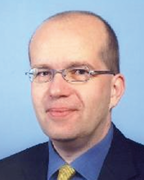
 From particles towards continuum theory: Crossing multiple scales
From particles towards continuum theory: Crossing multiple scales
Stefan Luding
University of Twente – NETHERLAND
Curriculum
Prof. Dr. rer.-nat. Stefan Luding is Chair for Multi Scale Mechanics at the University of Twente in The Netherlands since 2007, after he studied physics in Bayreuth, promoted in Freiburg, Germany, and - after a PostDoc in Paris, F, became Assoc. Prof. for ParticleTechnology at the TUDelft, NL.
He is working on Granular Materials, Fluids and Solids and multi-scale mechanics involving particulate and continuum systems and the transition between. He is Managing Editor in Chief of the journal Granular Matter since 1998 and President of the Powders & Grains committee since 2005.
Abstract
Particle systems are different from 'classical' atomistic systems in so far that the energy is lost irreversibly during collisions. This alone, without attractive forces involved, leads e.g. to structure formation/clustering or agglomeration and is the origin for the non-trivial dynamics of granular matter.
Dependent on the energy input, the particles can flow like a fluid, jam and un-jam, or be solid with a very interesting anisotropic structure (contact-and force-networks). Reason for this is the interaction of the particles on the microscopic scale -- which leads to interesting phenomenology on the much larger macroscopic scale.
Scientific research and insights on the small particle scale are now translated to the macroscopic world of continuum theory -- where the latter opens access to many practical applications in industry and geophysics for example.
In particular, from molecular dynamics simulations of many atoms or particles, one can extract scalar fields like density or temperature, as well as velocity, i.e. vectorial
fields, or tensors like stress, strain, and structure.
Given sufficiently good statistics the data can have a quality that allows to derive constitutive relations about the rheology and flow behavior of complex fluids (like atoms confined in nano-geometry, or granular particle systems) that behave strongly non-Newtonian, with particular relaxation behavior, anisotropy etc.
The presentation will show the principle of the micro-to-macro transition and then several examples about constitutive relations obtained from micro/atomistic/particle simulations will be given.

